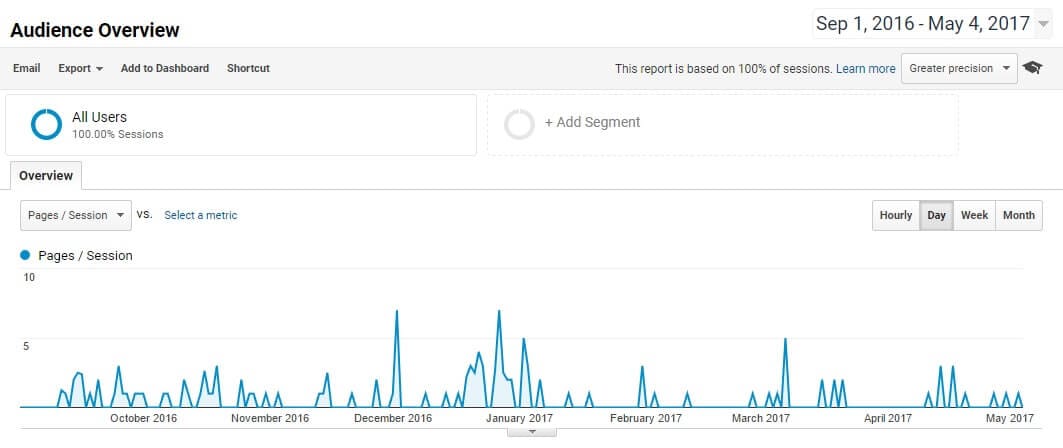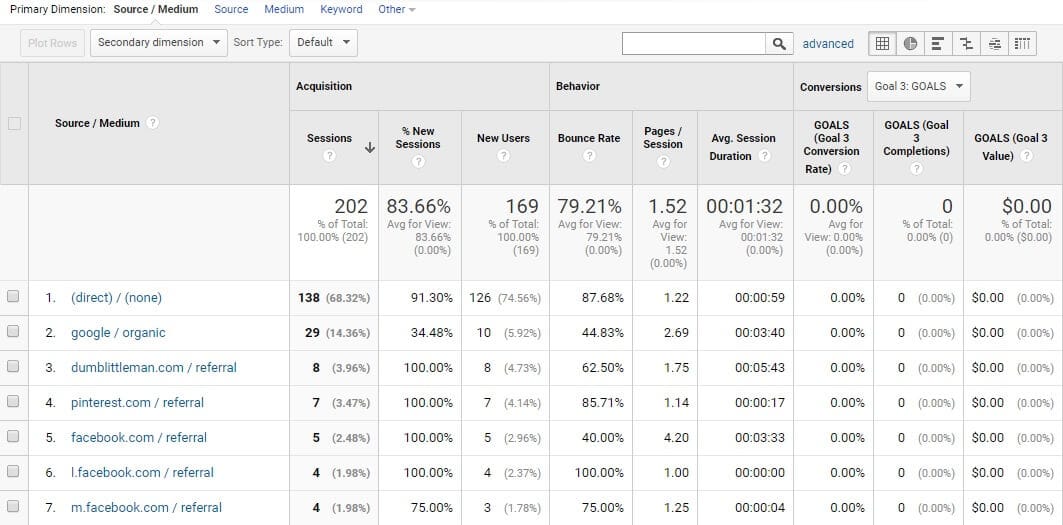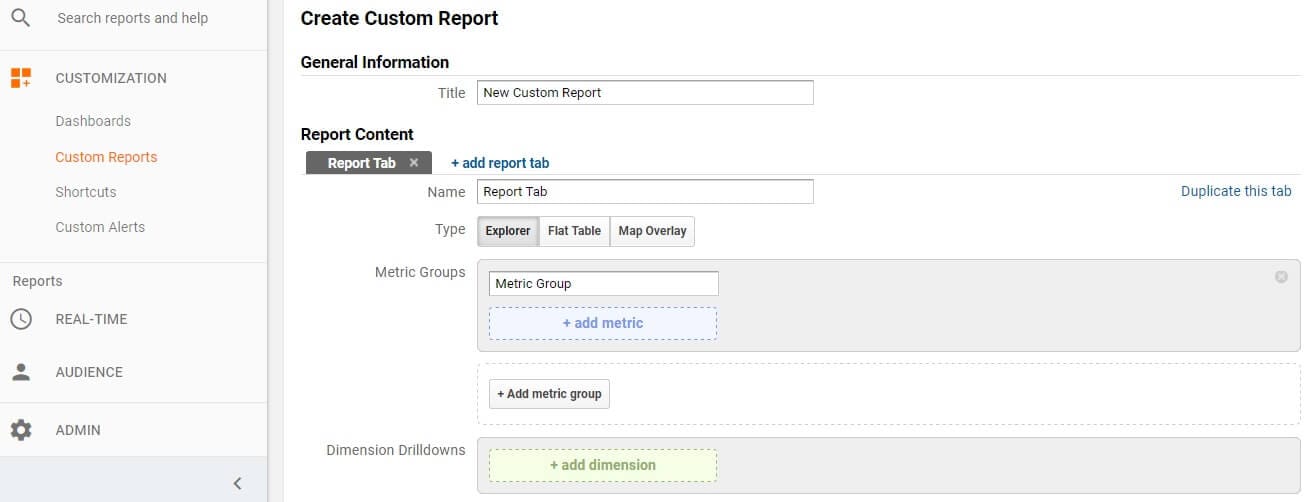Contenido
Las cifras de tráfico pueden ser un buen indicador del éxito de su negocio. Al fin y al cabo, cuantas más visitas reciba su sitio web, más clientes potenciales tendrá. Sin embargo, el proceso de seguimiento puede parecer complicado y es posible que te sientas abrumado por los pasos que hay que dar.
Afortunadamente, PrettyLinks le permite integrar fácilmente una herramienta como Google Analyticsy realizar un seguimiento del tráfico y otras métricas del sitio web en un instante. Con esta información, podrá realizar los cambios necesarios en su sitio web y empezar a mejorar el rendimiento de su negocio. posición competitiva.
En este post, primero le presentaremos Google Analytics, incluyendo por qué debería considerar su uso. A continuación, le mostraremos cómo integrar Google Analytics con PrettyLinks y le ofreceremos algunos consejos para aprovechar al máximo esta integración. Empecemos.
Qué Google Analytics (y por qué debería usarlo)

Google Analytics es un servicio gratuito que genera estadísticas detalladas sobre los visitantes y las fuentes de tráfico del sitio web, y también realiza un seguimiento de datos medibles como las conversiones y las ventas del sitio web. Puede ser una herramienta útil para los profesionales del marketing de afiliación o para cualquier propietario de un sitio web que desee echar un vistazo entre bastidores a su sitio web.
Google Analytics pone a su disposición una gran cantidad de información, entre la que se incluye la siguiente razones específicas para utilizarlo en su sitio. Puede hacerlo:
- Rastrea el tráfico. Un conocimiento sólido de las fuentes de tráfico puede ayudarle a mejorar diríjase a su público.
- Observa las tendencias. Tendencias - como el uso de navegadores web y tasas de rebote - puede proporcionarle una comprensión de su público y sus necesidades.
- Maximice esfuerzos de marketing. Con una mirada a comportamiento del público y otros datos similares, puede modificar sus actuales planes de marketing para ajustarlos más a la realidad.
En comparación con sus competidores, Google Analytics es un programa maduro, que ofrece funciones avanzadas y amplios recursos. Y como ya hemos dicho, ¡también es gratis!
Cómo integrar Google Analytics con PrettyLinks
Para este paso necesitarás haber instalado y activado antes el plugin PrettyLinks. Para iniciar el proceso de integraciónDescargue un complemento de Google Analytics adecuado para su sitio de WordPress. Google Analyticator le permite ver sus estadísticas dentro de WordPress, y es compatible con PrettyLinks:

A continuación, vaya a PrettyLinks > Opciones > Opciones de enlace en el panel de control de WordPress. Para activar Google Analytics, simplemente marque la casilla caja junto al Google Analytics que hace que la opción esté disponible cada vez que se crea un enlace con PrettyLinks:
![]()
Por último, tenga en cuenta que los enlaces sólo se pueden rastrear si son uno de los siguientes tipos de redirección: capa, bonito bar, javascripty meta-refrescar. Una vez en marcha, puedes aprovechar la potencia y flexibilidad de tu integración.
Cómo aprovechar al máximo la integración de Google Analytics y PrettyLinks (3 consejos)
Ahora ya sabes cómo integrar Google Analytics con PrettyLinksEn este caso, vamos a ver tres consejos que le ayudarán a sacarle el máximo partido.
1. Entender lo que Google Analytics puede hacer por usted

Google Analytics dispone de un amplio lista de métricasy hablar de todos ellos podría llenar varios libros. Para utilizar la herramienta de forma óptima, tendrá que familiarizarse al menos con los conceptos básicos. Algunas de las métricas más útiles de Google Analytics para los profesionales del marketing de afiliación están relacionadas con comercio electrónicoTambién encontrará funciones prácticas como segmento de audiencia informes. Sin embargo, hay mucho más en oferta.
Si no está seguro a qué métricas prestar atenciónAquí tienes un par para empezar:
- Visitantes únicos y Páginas vistas. Juntos, proporcionan una indicación clara de los verdaderos niveles de tráfico en su sitio, y le dicen lo que los visitantes están mirando.
- Tasa de rebote. Los visitantes que no se sientan obligados a hacer clic en los enlaces rebotarán, por lo que esta métrica indica si necesita reevaluar su contenido a nivel básico.
Aunque la plétora de métricas y funciones que se ofrecen puede parecer abrumadora al principio, el tiempo y la experiencia acabarán por darle sentido.
2. Integre (y controle) los objetivos de su sitio web

Los objetivos son elemento clave para el éxito de su sitio web, y le proporcionará claridad y dirección. Google Analytics también incluye funciones relacionadas con el establecimiento de objetivos y el seguimiento, y son muy fáciles de usar.
Para empezar, siga estos pasos pasos sencillos:
- Cree sus objetivos en Google Analytics. En resumen, tendrá que ir a Admin > Objetivos en la parte izquierda del panel de control de Google Analytics. Desde aquí, haga clic en Nuevo Objetivoseleccione una plantilla predefinida o cree una personalizada. Seleccione la tipo de objetivointroduzca los datos y haga clic en Guardar.
- Siga los resultados de su objetivo. Navegando hasta Conversiones > Objetivos > Visión general, puedes ver los resultados del seguimiento de tu objetivo y hacer los ajustes necesarios.
Más información objetivos del sitio web que establezca, más capaz será de alcanzar sus objetivos personales y empresariales, como un mayor tráfico y más conversiones. Así que merece la pena (¡a veces literalmente!) dedicar algo de tiempo a esto.
3. Crear informes personalizados

En pocas palabras, informes personalizados son las que usted mismo define. Le permiten establecer parámetros específicos para sus informes en función del navegador web, la fuente de tráfico e incluso la ubicación.
Al igual que con los demás pasos, crear un informe personalizado en Google Analytics es sencillo:
- Elija lo mejor dimensiones y métricas. Hay una gran variedad de combinaciones dimensión-métrica que puedes utilizar. Puede experimentar e incluso cambiarlos sobre la marcha.
- Interpretar los resultados. Esto le ayudará a hacerse una idea de la situación actual de su sitio web y a planificar el futuro.
Al igual que los objetivos, los informes personalizados le ofrecen una valiosa visión de la situación actual de su sitio web. Con esta información, podrá realizar los ajustes necesarios para alcanzar sus objetivos.
Conclusión
Un seguimiento adecuado del tráfico de su sitio web -junto con algunas otras analíticas- puede ayudarle a calibrar mejor los objetivos de su sitio (como mejorar las fuentes de tráfico y aumentar sus ingresos). En general, esto puede ayudarle a realizar los cambios necesarios para alcanzarlos y superarlos.
En este post, te mostramos cómo integrar Google Analytics con PrettyLinksy optimizar su integración. Para recapitular rápidamente:
- Familiarícese con las ofertas de Google Analytics.
- Integre (y controle) los objetivos de su sitio web.
- Crear informes personalizados.
¿Tiene alguna pregunta sobre cómo integrar Google Analytics con PrettyLinks? ¡Háganoslo saber en la sección de comentarios a continuación!







